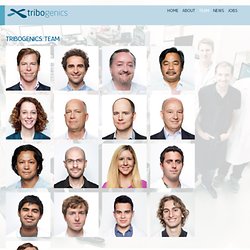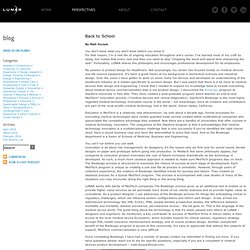

Projects · Philips Healthcare projects 2000-2008. The Challenges of Medical Device Manufacturers, and How Outsourcing Partners Can Help. Outsourcing began as a way of addressing some of the peripheral jobs in development, sustenance, and maintenance of product lines, areas where companies felt that both risk and cost were low.

For medical device manufacturers, it is now more important than ever to consider the options in outsourcing partners. This article examines the extent to which medical device manufacturers ought to take advantage of the opportunities provided by outsourcing, and the most beneficial ways of doing so. During the early days of outsourcing, the risk was in delay of product releases, while the extended, outsourced team learned some of the work on the job.
The core part of the product development consisting of the company’s intellectual property (IP) remained at the main R&D center in-house. University of Missouri - School of Medicine - Biodesign and Innovation Program - Sponsors. Team. Dale Fox - CEO A startup entrepreneur and innovator who has launched, grown, managed, and sold several companies based on new breakthrough technologies.

He founded the first company exclusively focused on mobile devices and his background includes all aspects of marketing and finance for startups. Carlos Camara, PhD - Chief Scientist A high energy density physicist and one of the inventors of the company's disruptive technology. Building on his work at the UCLA Physics department, Carlos is leading the company's technology development and evolution. Mark Valentine - Chief Operating Officer A seasoned product engineer with 7 years experience in the X-ray industry as President and COO of a leading imaging firm. Jon Fong - Director of Engineering Jon has an extensive background managing the New Product Development process with an emphasis on emerging growth technologies.
Andrea Belz, PhD, MBA - Strategy Advisor Craig Glynn - Director of Finance John Crandon - Outside House Counsel Whitney Henne. How will technology impact the future of health and medicine? Navigation Watch a Brief Day Three Recap More Videos from 2014 Participant Testimonials More Testimonials from 2014 2014 Program Schedule.

Stanford Student Biodesign and Biopharma. Biodesign Alumni. Medicine/Health. 1.2 Observation & Problem Identification. Chapter 1.2 presents a detailed approach and important considerations for conducting observations to uncover important clinical problems.

The steps below have been excerpted from the chapter and are presented with active web links to assist innovators in getting started. Set-Up Observations What to Cover – Observations can be performed with patients, physicians, other healthcare providers (nurses, physician assistants), third-party payers, facility administrators, and other stakeholders involved in the delivery and/or management of care.
Innovators should determine which ones are the most relevant and then tap into their personal networks to gain permission to conduct observations. Refer back to the defined strategic focus to make sure that the chosen contacts and fieldsites will provide information aligned with the area of interest. If possible, try to find various settings in which to conduct observations. Gretchen Anderson - Interaction Design.
Blogs - India Biodesign. Volver a la Escuela de la creatividad "LUNAR> que hace que un diseño de interacción diseño diferencia industrial, diseño de producto, ingeniería, diseño gráfico, Back to School By Matt Durack You don’t know what you don’t know before you know it.

For that reason, I’m a real fan of ongoing education throughout one’s career. I’ve learned most of my craft by doing, but realize that every now and then you need to stop “chopping the wood and spend time sharpening the saw”. Fortunately, LUNAR shares this philosophy and encourages professional development for its employees. My passion is product design for healthcare. Education in MedTech is a relatively new phenomenon. You can’t run before you can walk Innovation is all about risk management. LUNAR works with plenty of MedTech companies.The Biodesign process gives us an additional tool to enable us to provide higher value services as we permeate more levels of our clients’ business and so provide higher value as consultants. Since completing Biodesign I have had a number of people contact me interested in finding out more. Biodesign - Innovation for Life. Our mission is to train students, fellows and faculty in the Biodesign Process: a systematic approach to needs finding and the invention and implementation of new biomedical technologies.

Key components of the program include Biodesign Innovation Fellowships; classes in medtech innovation; mentoring of students and faculty in the technology transfer process; career services for students interested in medtech careers; and community educational events. Biodesign also works closely with the Stanford Office of Technology and Licensing and Spectrum, the Stanford Center for Clinical and Translational Education and Research to help accelerate the delivery of new technologies into patient care. As part of the university-wide Bio-X community, Biodesign includes faculty and students from over 40 departments across the Schools of Business, Engineering, Humanities & Sciences, Law and Medicine. Introducing Vention Medical. Diagnóstico por la Imagen. La inyección de seguridad de la red mundial. Medical » Yanko Design (2)